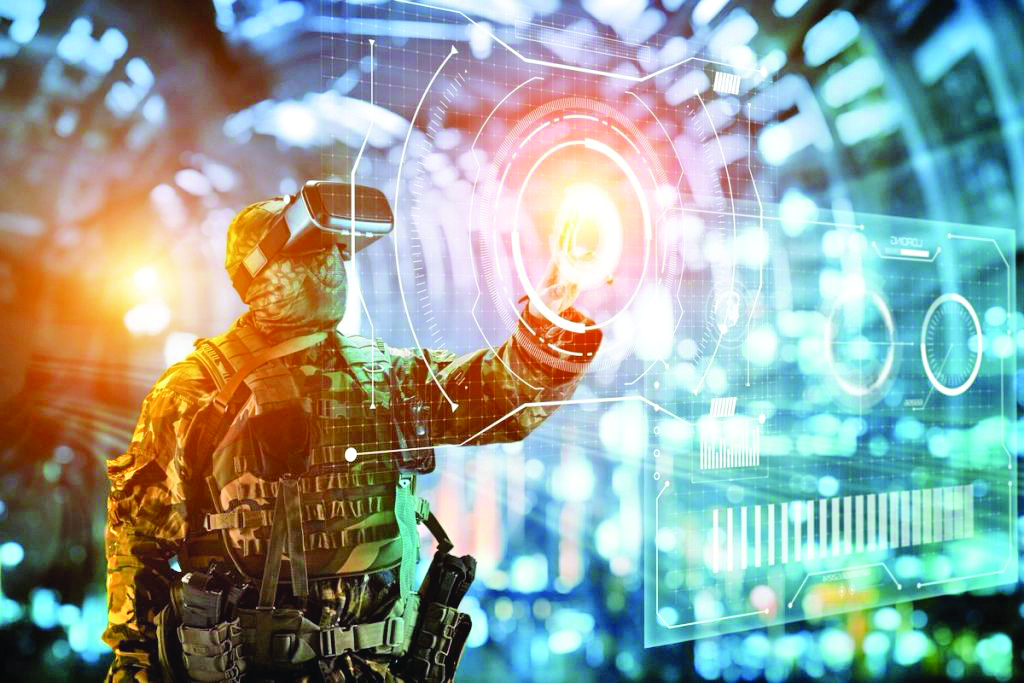In an era of technological innovation, artificial intelligence (AI) has emerged as a pivotal force reshaping the landscape of modern warfare. The rapid advancement of Autonomous Weapons Systems (AWS) signals a shift that countries can no longer afford to ignore.
This is evident from the tech-based Quad Leader summit at Biden’s hometown Wilmington, the Summit of the Future at the United Nations General Assembly and India’s deal with the US to acquire 31MQ-9B predator drones, unmanned aerial vehicles capable of remotely controlled or autonomous flight operations equipped with air-to-surface missiles and laser-guided bombs.
In fact, in the Industry 4.0 revolution, China surged ahead in this techno-hybrid arms race, which was a big challenge for its longest southern border neighbour, India.
China’s aspirations to dominate in AI are not merely economic; they are deeply intertwined with military strategy. The country’s ‘New Generation Artificial Intelligence Development Plan’ illustrates this dual-purpose approach, seamlessly integrating civilian technology into military applications. This strategic intertwining allows China to rapidly transition innovations from the commercial sector to its armed forces, creating a formidable advantage that complicates global security dynamics.
The implications of this AI integration extend far beyond national borders. As nations race to develop cutting-edge military technologies, the spectrum of an AI-driven arms race looms large. The potential for escalation of international tensions is significant, emphasizing the urgent need for robust oversight to manage conflict risks. In the current decade, the Azerbaijan-Armenia conflict, the ongoing Israel-Lebanon and the Ukraine-Russia conflicts are all examples of how the AI-driven arms race has spill over effects in the larger world.
Through its Strategic Support Force (SSF), China is developing AI-driven automated systems designed for operations in space, cyberspace, and information warfare. With President Xi Jinping’s insistence that “under a situation of increasingly fierce international military competition, only the innovators win”, the pressure is on India to not only keep pace but to carve out its own strategic space in this new reality. Industry modernisation has started but the pace needs to accelerate. One way of doing this is by increasing the role of private players in military modernisation strategy; another is the handholding of SMEs by the Ministry of Defence and placing large orders for their sustenance.
China’s military modernisation is characterised by a commitment to innovation across various technologies, including cloud computing, big data, and mobile intelligent terminals among others. This modernisation effort encompasses advanced capabilities like hypersonic glide vehicles and cyber-warfare technologies, aimed at establishing credible deterrence against foreign intervention. With substantial investments and strategic collaborations, particularly through initiatives like the Belt and Road Initiative, China is not just preparing for regional dominance but seeking to redefine global military paradigms.
In contrast, India’s entry into the AI race and wanting to become a major defence exporter by 2030, is gaining momentum but the pace needs to be fastened. Among others, the Indian Armed Forces are now prioritising the deployment of AWS and the development of Lethal Autonomous Weapons Systems (LAWS), while also bolstering cyber capabilities in collaboration with organisations like the Defence Research and Development Organisation (DRDO). The establishment of a Centre of Excellence for AI and quantum computing in Madhya Pradesh marks a significant commitment and India’s mission of becoming a manufacturing hub and a semiconductor leader are all steps in the right direction.
Here it is important to note that the former Chief of Indian Armed Forces, General M.M. Naravane identified crucial areas for India’s modernisation, including development of situational awareness, fusion of sensors, autonomous weapons systems and at human intellect level – faster decision-making capabilities with shortest change command.
As China accelerates its push for integrated and intelligent warfare across various domains—air, land, sea, underwater and space—India must urgently enhance its competencies in these areas. India needs to enhance its capabilities in warfare across seven domains: air, land, sea, outer space, cyber, electromagnetic spectrum, and near space.
Moreover, India needs to focus on developing emerging capabilities, refining its strategies for the electromagnetic spectrum, and incorporating lessons from contemporary conflicts, such as the Russia-Ukraine and Israel-Palestine/Iran conflicts. Striking a balance between technological innovation and diplomatic initiatives will be vital for India’s strategic resilience.
To prepare for future confrontations with China and to maintain its sovereignty, India must strengthen its capabilities across cyber, electromagnetic, and space domains, integrate AI effectively into its military operations, engage in experimentation and adapt to new developments, learn from the private sector and incorporate technical experts into all three branches of government – Executive, Judiciary and Legislature.
Views expressed are personal.
Purushendra Singh, Assistant Director and Aakarsh Bhargav, Research Associate at CUTS International, a 40-year-old global public policy, research and advocacy group.









